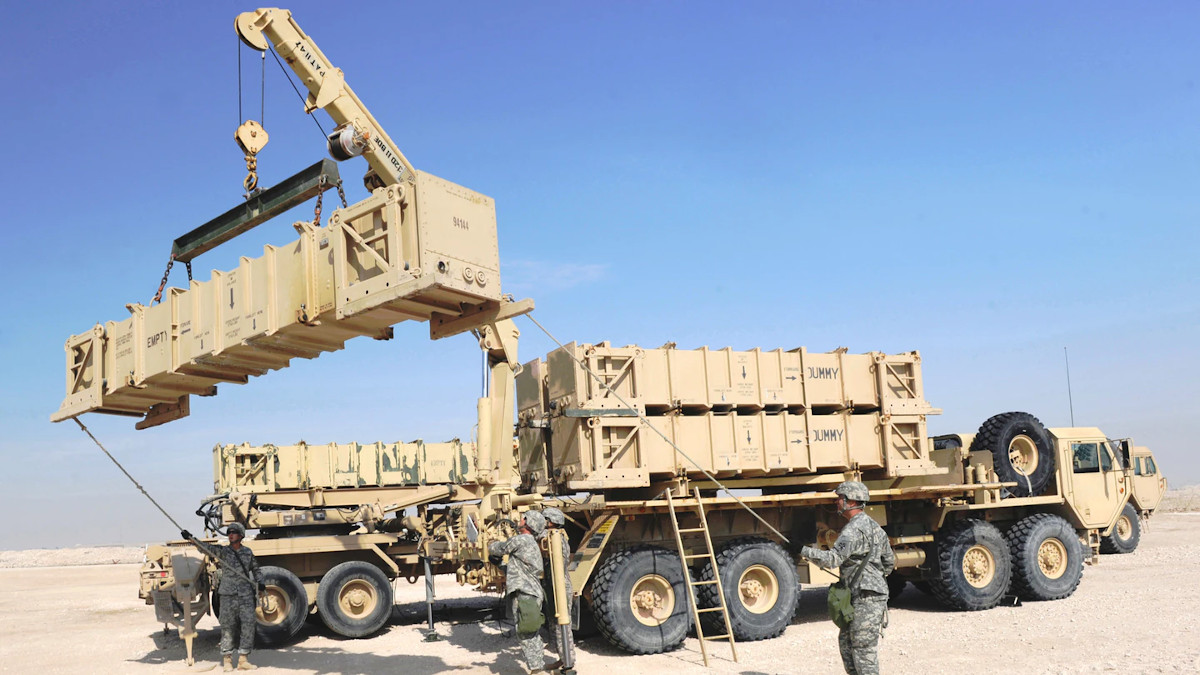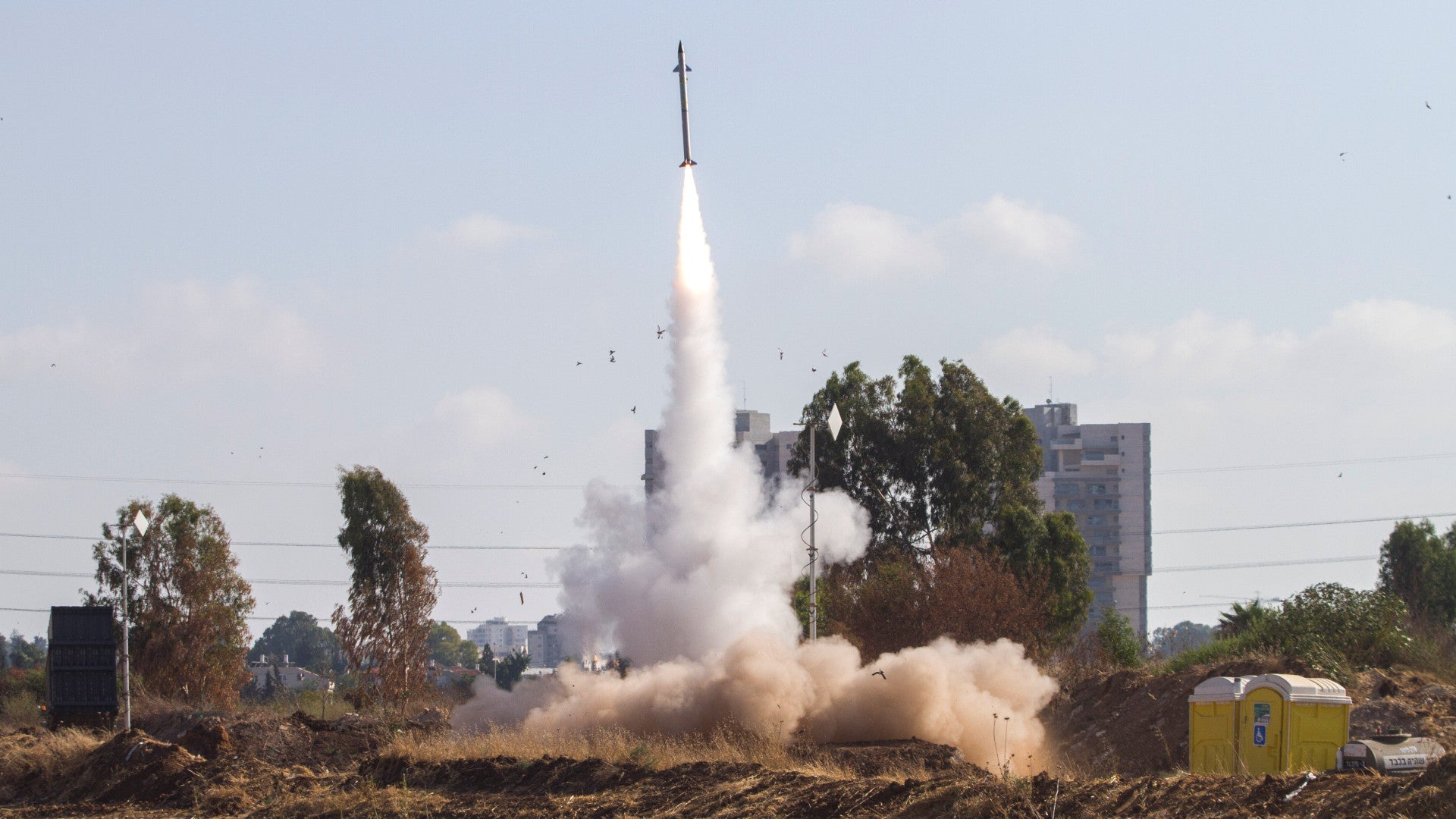Members of Congress and a senior U.S. Army officer had a testy exchange on Capitol Hill today over the lack of air and missile defenses in Iraq in the wake of a rocket attack that killed two American troops and one British service member at Taji Air Base yesterday. Legislators were particularly interested in why the U.S. Army has not yet deployed its recently acquired Israeli-made Iron Dome systems, which are combat-proven against exactly these types of threats. The tense discussion also came amid reports that none of the rockets fired at Taji were shot down, even though the U.S. military says it is now in the process of bringing air and missile defense systems into the country.
Congressmen Doug Lamborn and John Garamendi, a Republican from Colorado and a Democrat from California, respectively, grilled U.S. Army Lieutenant General Daniel Karbler, head of U.S. Army Space and Missile Defense Command, about Iron Dome and the attack on Taji at a hearing on Mar. 12, 2020. Earlier in the day, U.S. Marine Corps General Frank McKenzie, commander of U.S. Central Command (CENTCOM), had told reporters that Iranian-backed militias in Iraq were very likely responsible for firing the rockets at Taji, which also wounded at least a dozen other personnel belonging the U.S.-led coalition at the base. U.S. Secretary of Defense Mark Esper has also blamed at Iran and its regional proxies.
“In CENTCOM, are there opportunities to use Iron Dome, which is a proven anti-missile technology that the Israelis developed and have produced partly with our tax dollars, that we could be taking more advantage of to protect our assets and our people?” Lamborn asked Lieutenant General Karbler.
The Army purchased two batteries of the Iron Dome system last year, ostensibly to acquire an interim anti-cruise missile defense system. The system consists of a number of launchers loaded with Tamir interceptors tied to air defense radars. You can more about its capabilities in detail in these past War Zone pieces.

Despite Lamborn’s description of it as an “anti-missile technology,” Iron Dome was developed originally primarily to counter smaller, less complex threats, such as rockets, artillery shells, and mortar bombs, a mission set also known as C-RAM. It has been extremely successful in this role in Israel, successfully knocking down thousands of incoming threats since it entered service in 2011, according to that country’s authorities. C-RAM systems also offer a means of defense against small unmanned aircraft, which are another increasing threat to American troops across the Middle East.
Lieutenant General Karbler rightly pointed out that the Army is still in the process of training personnel to operate its Iron Dome batteries and otherwise get those systems operational and that they are not yet available for deployment anywhere. He added that the service expects to have an operational capability with the systems by the end of the year.
Karbler also highlighted the Army’s concern that they cannot be readily integrated into its overarching air and missile defense network architecture. On Mar. 7, U.S. Army General Mike Murray, head of Army Futures Command, had told legislators in a separate hearing, that the service was scrapping plans to buy additional Iron Dome batteries over the integration issue, as well as other concerns, such as the system’s actual ability to engage cruise missiles and possible cyber vulnerabilities.
The Army had also been having difficulties in negotiations with the manufacturer Rafael over access to proprietary information about Iron Dome to better assess its capabilities and to help develop ways to slot into the service’s Integrated Battle Command System network. “Iron Dome is a standalone system, not easily integrated into what we see as our future for air and missile defense of the Integrated Battle Command System, which basically looks at any sensor, best shooter to deal with the threats that are out there,” Karbler told Representative Lamborn.

“I hear what you’re saying, but I don’t want to see the perfect be the enemy of the good,” Lamborn replied. “I don’t want to see a perfect hoped for and expected capability deter us from using something that is available and usable right now and will save lives.”
“Earlier today, we discussed in the earlier committee, the two lives that were lost in Iraq to Katyusha missiles,” Congressman Garamendi further interjected, incorrectly referring to the unguided 107mm rockets in question as missiles. “The Iron Dome is specifically designed for [engaging] that missile and it doesn’t have to be integrated into your grand plan.”
Lieutenant General Karbler is certainly not wrong about the importance of being able to integrate any future air or missile defense system into the larger plans for the Integrated Battle Command System. Networking is absolutely key to providing a capable layered defense that can tackle various types of incoming threats across a broad area at once during a crisis or conflict. Buying systems that can’t work with the existing or future architecture risks leaving the Army, and other services, with assets it can only use in very limited or specific scenarios, which doesn’t necessarily present good value for the investment.
At the same time, there is a clear and immediate need for this kind of capability in Iraq, at least. Ensuring that the system is networked together there with other U.S. air and missile defense assets would necessarily be as critical in the current context, either.
The Army has already demonstrated its ability to relatively rapidly acquire Iron Dome systems even without an urgent operational requirement, too. As Congressman Lamborn noted, the U.S. government has helped finance the development of the system, as well, and has good relations with Israel, raising the possibility that authorities in that country might be able to help speed up deliveries, if asked.

Beyond Iron Dome, Garamendi’s comments, in particular, reflect a growing frustration on part of Congress, as well as the general public, regarding the apparent lack of defenses available to counter the immediate threat of both rockets and ballistic missiles that U.S. forces in the Middle East, especially Iraq, face right now. Rocket attacks, similar to the one aimed at Taji yesterday, have been occurring regularly at a number of bases that American troops use in that country, as well as the U.S. Embassy in Baghdad, for months now.
Politico has reported that no existing U.S. air defenses at Taji shot down any of the incoming rockets in this latest attack and its not even clear if there were any such systems in place at all. Exclusive satellite imagery that The War Zone obtained of Al Asad Air Base, situated to the west of Baghdad, which was a target of unprecedented Iranian ballistic missile attacks in January, showed no signs of either higher-end air defense systems, such as Patriot surface-to-air missiles, or land-based Phalanx close-in-weapon-systems, which are designed for the C-RAM mission just like Iron Dome.
At least as of 2019, there were land-based Phalanx systems deployed in Iraq, but it’s unclear what bases they were present at. As point defense systems, they can only provide immediate defense in the area where they are deployed. Iron Dome has the benefit of being able to provide C-RAM coverage across a much wider area.

On Mar. 10, CENTCOM commander General McKenzie had informed legislators that the U.S. military was in the process of sending air and missile defense systems into Iraq in response to the Iranian ballistic missile strikes earlier this year, but did not say what type of systems were headed to the country or how many. Joint Chiefs of Staff U.S. Army General Mark Milley had told reporters in January that the United States was having trouble negotiating the deployment of Patriots into the country with authorities in Baghdad.
“We have to go into the closed session to be able to talk about what systems [are going into Iraq],” Lieutenant General Karbler told Garamendi.
“It’s reported in the newspapers,” Garamendi chided him. “You know better,” he added before the hearing moved on.
Patriot surface-to-air missile systems would offer a defense against certain Iranian ballistic missiles, but would not offer any protection against the smaller rockets that are routinely fired at American military and diplomatic personnel. It is fair to say that, at present, the Army’s Iron Dome batteries are not deployable and that there is no guarantee that they would be able to successfully intercept all of the incoming threats during a future attack, either. No air or missile defense system is perfect, something The War Zone
has stressed in the past.

Still, the apparent lack of low-end air and missile defenses of any kind in Iraq raises questions about why the U.S. military as a whole does not appear to have taken any additional steps to even mitigate the rocket threat. It is possible that diplomatic considerations have been an issue in deploying more low-tier air and missile defenses just as they have been with regards to sending Patriots.
This is a threat that is real and well understood. In December 2019, The K-1 base near the northern Iraqi city of Kirkuk suffered a similar attack to the latest rocket barrage on Taji, which killed a U.S. contractor. That set into motion a chain of events that included the U.S. government’s decision to kill Iranian General Qasem Soleimani in Baghdad.
That action directly led to Iran launching its missiles strikes aimed at U.S. forces in Iraq, which left more than 100 American service members with traumatic brain injuries. There were no fatalities, thanks in no small part to early warning from space-based sensors that gave American personnel enough time to seek cover.
“I have spoken with the president,” U.S. Secretary of Defense Mark Esper told reporters on Mar. 12. “He’s given me the authority to do what we need to do, consistent with his guidance.”
“Let me be clear: The United States will not tolerate attacks against our people, our interests or our allies,” Esper also said. “All options are on the table.”
U.S. retaliation now against Iranian forces or their proxies, in Iraq or elsewhere in the Middle East, for the Taji attack, which notably came on the occasion of Solemiani’s birthday, could easily prompt further strikes from those groups in response. Regardless, if the past few months are any indication, rocket attacks will continue to pose a significant threat to them, and one that is perhaps greater than it should be, until similar defensive systems are put in place.
Contact the author: joe@thedrive.com
